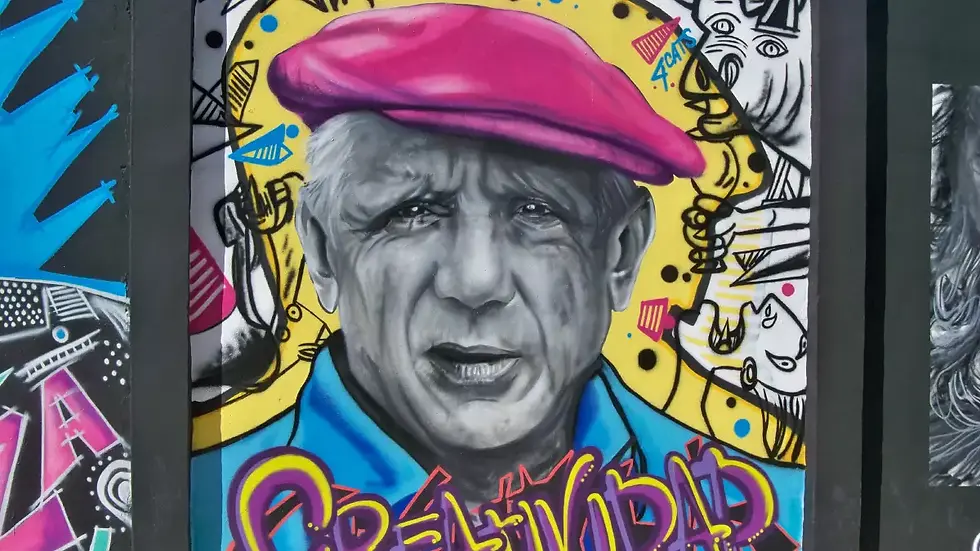Upon These Crowded Streets
- Shehan
- May 31, 2022
- 1 min read
Updated: Aug 30, 2022
Serendib Magazine (c) 2008.
A survey of Colombo's street vendors.

The dogs do not stop nodding. Hundreds are perched, group photo style, on batik-lined shelves. Vaguely Bulldog-ish faces on vaguely Beagle-ish bodies. Bobbing heads propelled by metal weighting, somewhat cute, somewhat tacky. While we play with these ornaments, two real dogs approach from the street and look up in befuddlement at these plastic caricatures.
The stall is manned by two boys in white vest and blue shorts. They are after school and minding things while mother finishes lunch. Surrounded by loudly dressed dolls, shiny metal trucks, they grin with delight, the novelty of working in a toyshop clearly yet to wear off. Their duties include advising kite enthusiasts, counseling birthday present hunters and making sure the dogs keep nodding.
Across the street, a poster emporium sells laminates of Spiderman and Buddha. Next door, a jeweller displays silver chains for aspiring princesses and would-be punks. Down the road, four sari boutiques out-shout each other, while shoppers rummage through boxes filled with all the colours of Bollywood.
None of these shops are larger than an office cubicle. Wooden planks nailed to makeshift shelves, light bulbs dangling from crude roofing. The poster emporium is a table covered in prints, the jeweller uses hooks and strings in place of glass cabinets. The sari boutiques are as spacious as phone booths. The toyshop is a glorified closet.
In Sri Lanka, pavement vendors are as ubiquitous as pavements. Wander the streets of Kataragama, the bazaars of Kandy, the markets of Negombo or stroll the roadsides that connect them and you can't escape the little shops, as compact and as varied as the island itself.
The closer to rural Sri Lanka you are, the more traditional the offerings. The country's open roads are lined with rambutan sellers wielding bundles of bright red, charming cadju girls in costume and drink stalls serving refreshing thambili , invigorating kola kanda or intoxicating cups of toddy.
But closer to the towns, the phenomena becomes more hi-tech, more unusual, but no less steeped in tradition.
The alleys of Maradana and Panchikawatte are lined with hubcaps, rearview mirrors, headlights and windshields, glistening in the heat, and sold by eager men with spanners. This has been Colombo's bargain garage for decades.
Down the road is Pettah, where all of Asia is recycled, reconditioned, repolished and put on display. The nearby harbour brings in silks from China, gadgets from Japan, toys from Thailand and every imaginable piece of kitsch that can be turned in for a profit. This vibrant roadside sprawl of shops and shoppers is part commerce and part carnival.
Pettah began as patches of pavement controlled by street gangs in the 1940s, rented to traders looking to make it in the big city. The gangsters soon wiped each other out, but the merchants remained, turning their mats by the road into wooden stalls and transforming these shacks into thriving businesses.
The street full of suitcases at insanely low prices may not look like much, but it has supported 3 generations of families. Make no mistake, fortunes have been made here. Today's corporate elite may be reluctant to admit exactly how many of Sri Lanka's businesses began life on these very streets.
Today, even modern art is sold on Colombo's pavements. Walk down Green Path, the tree-lined avenue surrounding Vihara Maha Devi Park, and you'll see art students, posing next to colourful canvases, making deals with passing cars.
But it's more than the prices or the unusual wares that draw crowds to Sri Lanka's street markets.
I once called an international hotline to learn that unlocking my (then) state-of-the-art phone would take 3 months and 34 dollars. Desperate, I went down to Pettah's Malwatte Road. A boy in a baseball cap unlocked my phone in under 3 minutes and charged me 50 rupees.
No one knows where this expertise comes from, but if you have a broken down anything, that your warranty refuses to fix, there'll be a character on some street corner able to breathe life into it. Or at least make you an offer for the scraps.
There's also the lure of the hidden gem. The sky blue kurta hidden amidst T-shirts bearing the words Ion Mayden. The cure for hair loss from the mountains of Nepal, sold only at Kandy's central market.
Peer amongst what the shop keeper calls "original fake" Rolex, Cartier and Tag watches and you may spy an antique timepiece from the war. Walk past the cobblers and you may spot an ancient Sinhala language typewriter, battered but still in working order.
As with any street market, beware of pickpockets and, if you're a tourist, be extra vigilant of instant inflation. Bargaining is a skill that can be learned and mastered. Pull your best poker face and offer two-thirds the quoted price. If negotiations flounder, smile, utter the words, "poddak avidala enang " and listen to the price plummet as you walk away.
Of course, if you prefer shopping experiences that come with air-conditioning and bar-coded price tags, the heat, the crowds, and the mess of it all may just get to you. But if you want to experience the natural exuberance of Sri Lanka in all its animated glory, there really is no better place than its crowded streets.











Comments